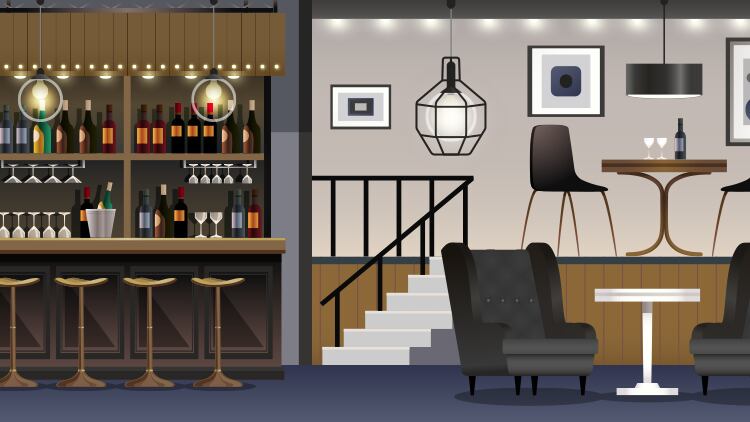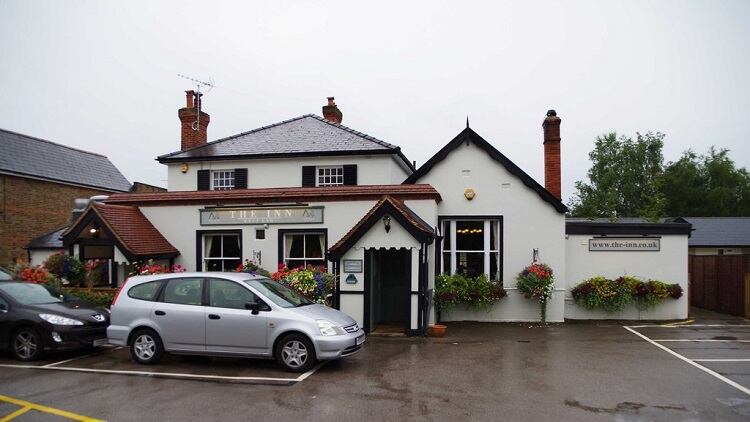According to figures from Kantar World Panel revealed at The Morning Advertiser’s Spirit Summit on 2 October, nine in every 10 visits to the on-trade only involves one venue, making it increasingly important to be multi-dimensional.
Steve Birkett, a business development manager for Admiral Taverns, agrees that creating multiple areas within a pub, or zoning, is becoming increasingly important in catering for the diverse audiences using pubs, as well as the increasing emphasis on pubs to create new experiences to compete against the off-trade – the value of which is currently £13.29bn.
“The key is to understand the market – understanding if there are any new markets out there and how you can create certain areas of your pub to fit those markets.
“It’s about trying to create ready-made areas for types of activity but not allowing that to disrupt other parts of the pub. You don’t want to turn down different revenue streams when certain activities are happening.”
Flexible design
Rachelle Roberts, of hospitality interior designers Simple Simon Design, says a flexible venue is essential for operators so that they don’t restrict their business, outlining that creating different zones is a prime way of achieving this.
She cites the Litton, in Litton, Radstock, Somerset – recently nominated in the pub category of the 2018 Restaurant and Bar Design Awards – as a prime example of creating diversity in a venue to control a pub’s look and feel.
“What we tried to do there was have the main restaurant area that leads on to a terraced garden with bi-fold doors so we can open it up in the summer and make bigger use of that area. Then there’s the main bar, but secondary to that is what we call the whisky bar – more of a ‘snug’ area with it’s own bar and lots of spirits.
“When the restaurant is full, say on a Sunday lunch, they use that for overflow space and can put tables in there for diners. It’s great for hiring out for events.
“Zoning is important because if you just had tables and chairs throughout an area it’s going to be very cold and stark, so we try to use lots of different textures and furniture – sofas, low level chairs, bar stools and poser tables – to try to break up the space. Obviously lighting plays a key part in this. You don’t want people eating in the darkest areas.
“With the Litton, due to the nature of the build, the whisky and the snug area is in a darker bit whereas with the restaurant we’ve got the big bi-fold doors and windows to make it a bit more light and enjoyable if you’re having a meal.
“Lighting is important because, in an evening when you don’t want it to be so bright in there, we make sure that everything is on a dimmable circuit so we can try and zone everything using lighting as well.
“We also use fixed seating quite a lot. It can be difficult because it’s not flexible – you can’t move it once it’s in – but we use it because you can shape the room with it and create a divide in a restaurant area, for example.”
Finding a new area
Howard Bates, director at TurnerBates Design & Architecture, the company behind the Coach in Beaumaris, Anglesey, north Wales – also nominated in the pub category of the 2018 Restaurant and Bar Design Awards – describes pub and bar design as “constantly evolving”.
“Gone are the days when you could have a pub that just sold beer, it’s got to have a bit of an angle or a different offer.
“Take the Coach for example, it’s a grade II-listed building in the heart of Beaumaris. Part of the brief on that project was that it functions as not only quite an old fashioned public bar and saloon at the front, but then the back area – the part we did the major refurbishment on – was an old brasserie. Then they have a fine-dining area upstairs, which is slightly more exclusive.
“In terms of zoning, we thought we needed to look at the unused courtyard space that the brasserie wasn’t engaging with. Part of our brief was to extend the seating area outside into this courtyard.
That was essentially finding a new zone.
“It’s been trading over a year now and that additional space that we re-utilised, especially after the summer we’ve just had, has been very popular.
“It gives them the opportunity by increasing the zones to offer more than just having dining in the brasserie area, they now also have private parties in there.”
Bates adds: “An area that can be sectioned off wants to have good acoustics and have the right materials in there.
“The keys are making it comfortable, making it feel special – if you’ve got access to daylight, a vista, a view, that’s always great.
“People don’t like to feel that they’re stuck down in a basement. Zoning for private dining or an event space wants to feel special.”
Striking a balance
Star Pubs & Bars licensee Graham Anderson of the Eastfield Inn, in Bristol, has found pub zoning to be an effective way of catering for both the young and old within his local area.
“It’s a big community pub in a residential area – there’s not a lot else around here,” he says. “There was demand for areas that the pub didn’t traditionally have available. It had a skittle alley, but now there aren’t that many skittles teams.
“We had space but it wasn’t put to use in the right way. We’re very family-focused during the day but our elderly crowd who like to come and have lunch and a cup of tea wouldn’t necessarily want to be sat in a café-style place full of kids. We would be alienating one part of our trade.”
Anderson saw the opportunity to create a new zone in his pub from the existing, and seldom used, skittle alley.
“Obviously the skittle alley wasn’t suitable for children because they’d fall down the bit where the balls run, but we didn’t want to get rid of the skittle alley altogether because it’s a good income stream in the evenings.
“We’ve made it so that there are flaps that go down to cover the ball channels and carpet goes over the top – the room essentially just becomes a long, thin, room.
“The key thing is that you can target different markets at the same time. If you try and cater for everyone in one room, it doesn’t work. You can’t have fine dining and football in the same room.
“What we have around in our local area during the day time is totally different to what we have around during the evenings – you can’t aim for the family market after 9pm but you can aim for some skittles teams.
“You can’t sit around and say ‘our market isn’t there after 8pm’ you need to have a different market. You can’t pay the rent on one income stream.”
‘Military operation’
While technology can also act as an effective way of zoning off an area of a pub for different functions, multi-faceted venues need to be paired with slick staff operation.
Paul Eastwood of the Famous Three Kings in Fulham, west London, three-time winner of the Great British Pub Awards’ prize for Best Sport Pub, explains: "We are very lucky at the Famous Three Kings to have six separate sound zones to go with our 19 TV’s and three projectors.
“Showing up to 10 games or sports at the same time - six with sound - is a real military operation and takes a lot of planning.
“Each morning before shift begins we map out where each game will go, whether it will have sound or not and then how it transitions into either another game, a music or party area or a quieter family-friendly food zone as the day progresses.
"All the team, from management to door staff, will then know where each game is going to go and what will be on in the area afterwards, so people can be directed easily to where they want to be. In this way we can show as many games as possible and keep a great party atmosphere, whilst not alienating our locals and food trade. It is all quite fluid with sometimes games changing as soon as the final whistle goes.
“We do try to keep a little wriggle room with a spare TV for any unexpected requests on the day, or in case one area gets too busy and needs an overflow.”
Operator Keith Treggiden of Rendezvous in Weymouth, Dorset – winner of the best live entertainment pub category at the 2017 Great British Pub Awards, agrees. “In our weekly manager meetings we map out the whole week, agreeing the format and what goes where, so we are very streamlined.
“We are the only sports venue in town now and we pride ourselves on this, ensuring we carefully plan our engagement with customers."
To find out more about pubs for sale, lease and tenancy visit our property site.




